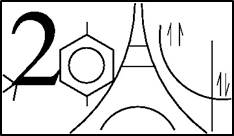Modeling biomolecular systems by explicitly taking into account the quantum mechanical behavior of the electrons represents one of the greatest challenges for theoretical chemistry studies. This is often achieved by coupling Molecular Dynamics (MD) with quantum chemistry methods. However, demanding computational efforts are usually necessary.
We recently developed a new scheme allowing us to perform reasonably long Born-Oppenheimer MD simulations of large systems using a quantum electronic Hamiltonian described at the SemiEmpirical (SE) level (SEBOMD [1]). This technique has already been successfully applied to simulate liquid water [1] and N-methylacetamide [2] in aqueous solution.
Although SE methods are very appealing because of their low computational cost, they were not originally developed to model intermolecular interactions. Some improvements were proposed in the past years for water and small hydrated systems (PM3-PIF2).[3] However, our recent work has shown that most of the current SE methods in the literature are not reliable to predict the properties of hydrophobic groups in aqueous solution. We have thus developed a new 'force field like' SE approach (PM3-PIF3), in which atom types are introduced to reproduce high level ab initio interaction energy surfaces.[4] Here we shall discuss this methodology and present its application to a few model systems (from simple 1:1 solute-water complexes to small biomolecules in aqueous solutions).
[1] G. Monard, M. I. Bernal-Uruchurtu, A. Van der Vaart, K. M. Merz Jr., and M. F. Ruiz-Lopez J. Phys. Chem. 109, 3425 (2005).
[2] F. Ingrosso, G. Monard, M. Hamdi Farag, A. Bastida, and M. F. Ruiz-Lopez J. Chem. Theory Comput. 7, 1840 (2011).
[3] W. Harb, M.I. Bernal-Uruchurtu, M.F. Ruiz-Lopez Theor. Chem. Acc. 112, 204 (2004).
[4] A. Marion, G. Monard, M.F. Ruiz-Lopez and F. Ingrosso (submitted).
- Image

 PDF version
PDF version

